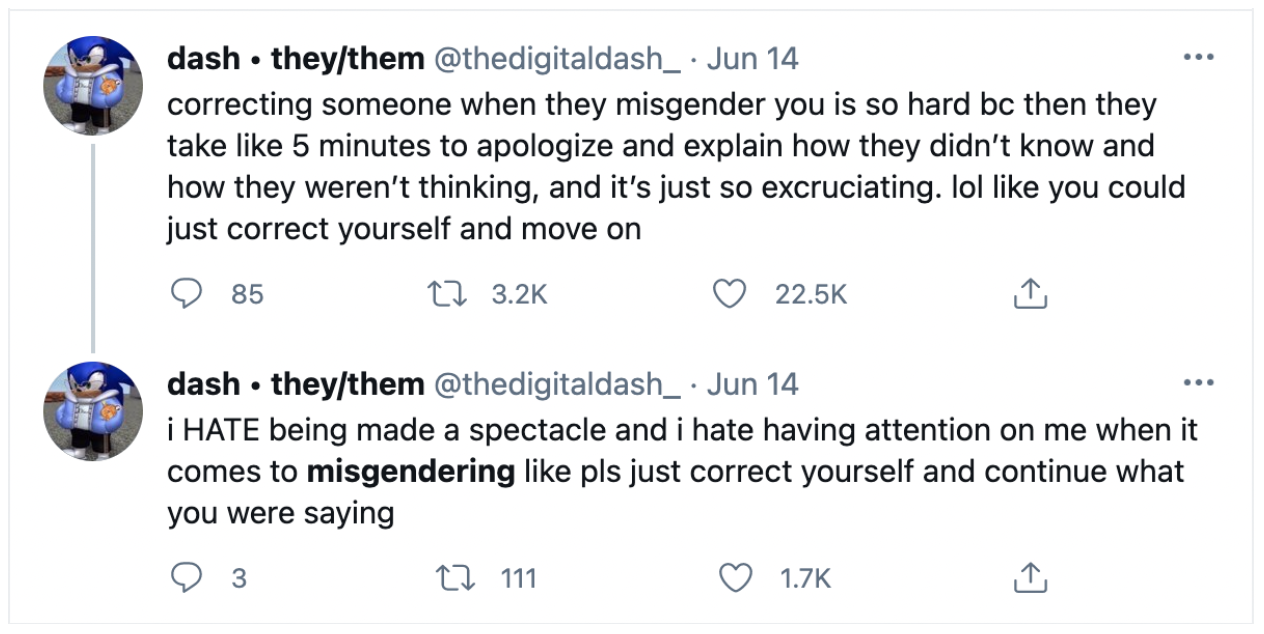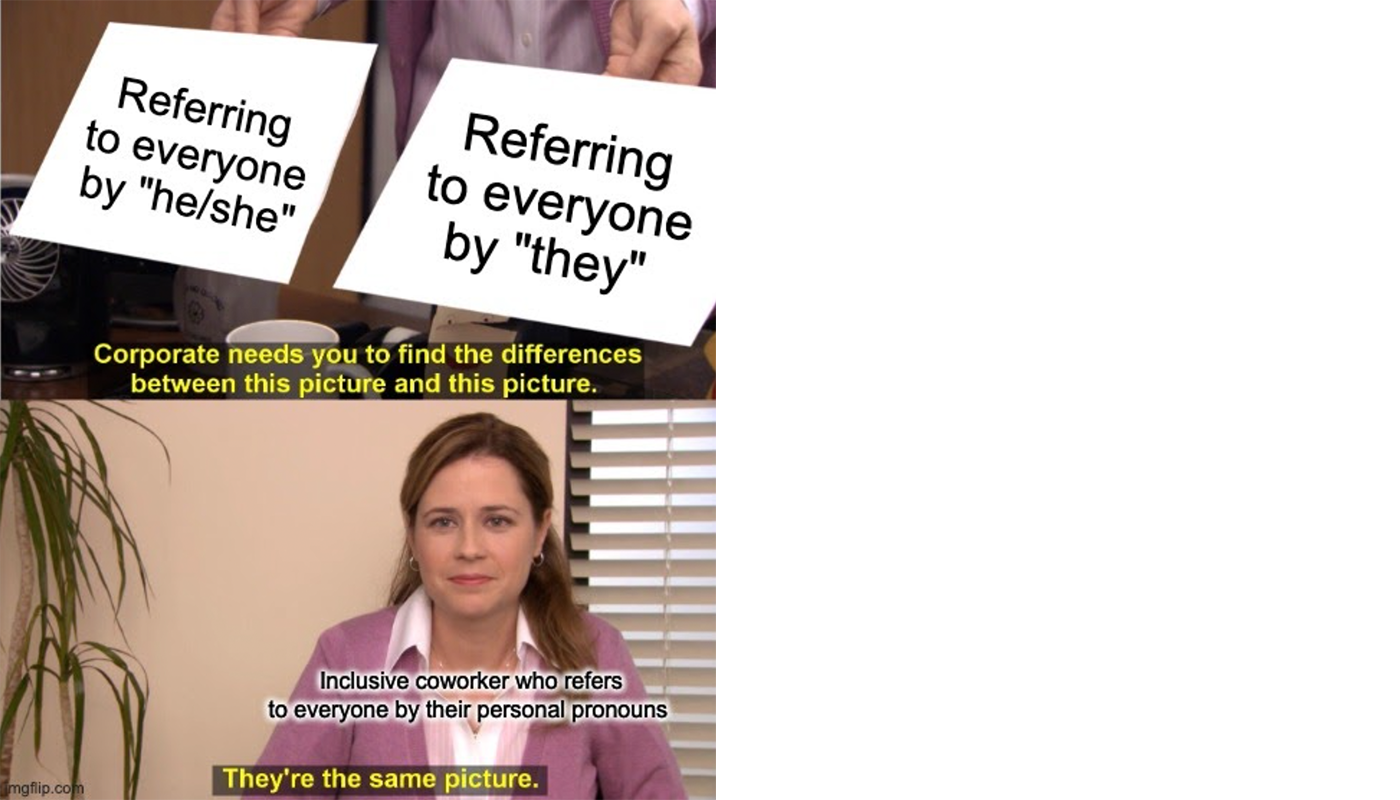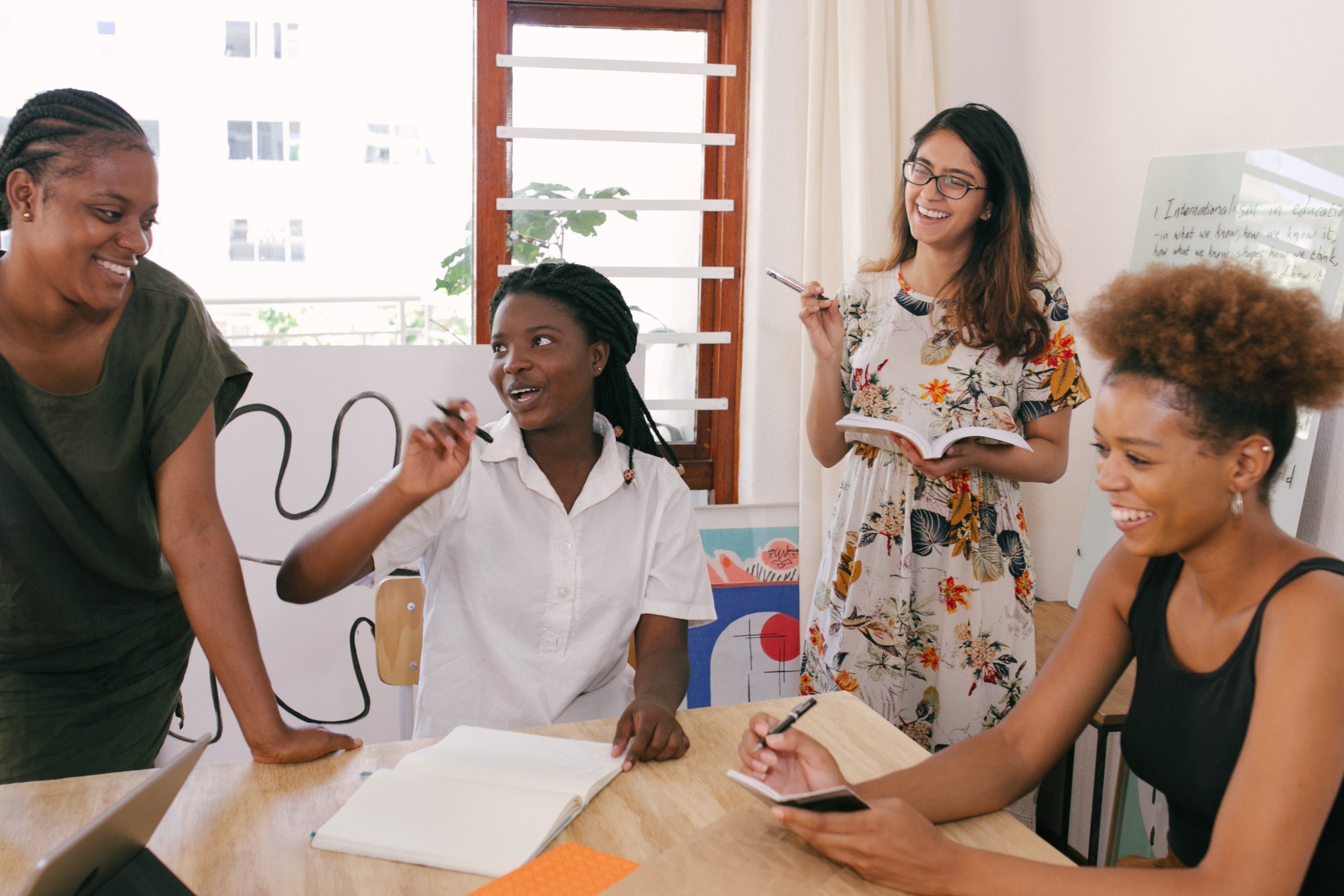It’s about basic respect– making pronoun sharing the standard
Create an inclusive workplace that is respectful of transgender and non-binary colleagues.

Oklahoma electing Mauree Turner as its first out non-binary state lawmaker in November is just one more example of gender inclusivity becoming the norm. We have seen singer-songwriter Demi Lovato share their non-binary identity and change their pronouns to they/them. Elliot Page embraced his identity as a transgender man. Conversations surrounding gender fluidity continue to be initiated as individuals begin embracing their authentic selves. Cisgender women and men (people whose gender identity corresponds with their sex assigned at birth) are now expected to treat trans and non-binary colleagues (individuals who do not exclusively identify with male or female gender categories) with respect and care.
Pronoun sharing is a mindful, inclusive practice that continues to be incorporated into corporate culture.
So, what are personal pronouns?
LGBTQIA+: An acronym that stands for lesbian, gay, bisexual, trans, queer, questioning, intersex, asexual. The ‘+’ signifies aromantic, pansexual, polysexual and any other identity along the gender and sexuality spectrum. An umbrella term sometimes abbreviated to LGBT/LGBTQ+ (1) pic.twitter.com/KjkRmnxgKL
— The Other Box (@_TheOtherBox) February 3, 2020
A pronoun is a word that replaces a noun and can be used to refer to a person. Gender pronouns are a set of third-person pronouns that communicate an individual’s gender identity. Traditionally, the feminine and masculine pronouns “she/her/hers” and “he/him/his” have dominated the English language. However, as long-deferred conversations about gender expression and identity continue to be initiated, people are becoming more mindful of the pronouns they use and are open to exploring gender-neutral alternatives. When sharing one’s gender pronouns, an individual typically states their subject, object, and possessive pronouns—for instance, “they/them/theirs,” “she/her/hers,” or “he/him/his.” Gender pronouns are a useful tool for promoting inclusion because they create an opportunity for individuals to share their gender identity with their peers.
Ok, but why is pronoun sharing important?
Pronouns are one way we convey our identities. Using the correct pronouns is a matter of respect. In a society with a dominant (and limiting) set of norms, it is vulnerable and sensitive to publicly share an identity that some people fail to recognize. Using the incorrect pronouns, intentionally or not, undermines the person in a harmful and hurtful manner since you are directly disrespecting who they are. By standardizing the practice of sharing gender pronouns, individuals minimize the risk of misgendering coworkers or referring to them by the wrong pronoun. Relying on often misleading visual cues such as physical appearances to gauge a coworker’s pronouns is a problematic practice that may lead to inaccurate, hurtful assumptions.

Referring to a colleague by the wrong pronoun is a recipe for an extremely painful interaction. Speaking up can be a difficult and intimidating process.
Today, a presidential candidate misgendered me, and instead of pointing this out, I politely let it go in order to not distract from the topic. Because as soon as that polite correction comes, the person corrected will inevitably derail the convo. This happens all the time.
— Charlotte Clymer 🏳️🌈 (@cmclymer) June 23, 2019
We are told that trans and non-binary people intentionally seek to be aggrieved and offended by manufacturing problematic aspects of our day-to-day living, pronouns probably being the most common. I truly wish cis folks understood how much we let go on a constant basis.
— Charlotte Clymer 🏳️🌈 (@cmclymer) June 23, 2019
The live of trans and non-binary people are geared toward survival, and thus, we find ourselves constantly accommodating cis folks in myriad ways. Not calling out misgendering. Not visiting pools, gyms, beaches. Avoiding crowded public restrooms. Etc, etc, etc.
— Charlotte Clymer 🏳️🌈 (@cmclymer) June 23, 2019
American activist and former press secretary Charlotte Clymer shares her experience being misgendered. This harmful experience can be avoided by normalizing the practice of pronoun sharing.
Trans & nonbinary people often have to share their pronouns to be identified correctly.
As a cisgender person, sharing pronouns costs nothing and naturalizes this process.
Source: International Pronouns Day, ARGO.
Using a coworker’s personal pronouns is an important way to affirm his/her/their identity and demonstrate respect. Pronouns are fundamental to one’s identity, so by routinely sharing pronouns at the beginning of meetings, companies normalize conversations about gender expression and minimize the risk of misgendering workers.

It’s not a universal pronoun that always applies to everyone because it’s “neutral.” If you know someone uses “he” and you’re call him “they,” that’s not better than “she”… Use the right pronouns.
— Ezra J. Wayne (@therealhanyolo) June 20, 2021
Common gender-neutral or gender-inclusive pronouns include they/them/theirs. However, there are several other non-binary pronouns, such as ze/zir/zirs, so it is important to ask and communicate one’s preferences. If you are unsure of a colleague’s pronouns, it is recommended to use their name until you have an opportunity to ask.
How do we initiate pronoun sharing?
According to the article “When (& How) to Ask About Pronouns,” a polite way to pop the pronoun question in a one-on-one setting is to state your gender pronouns and give your coworker the opportunity to do the same. For example,
“Hi, my name is Cate. My gender pronouns are she/her/hers. Can you remind me of your name and pronouns, please?”
“What’s Your Pronoun?” is a useful guide for easing workers into this possibly unfamiliar practice and socializing pronouns in everyday settings. This handbook indicates that meetings are a great way to normalize this practice. Cisgender workers who refer to their colleagues by their specified gender pronouns and actively participate in pronoun sharing can become stronger allies for their trans and non-binary colleagues. Here is an example of how to facilitate this practice:
“My name is Jane Doe, and I am the Director of Operations. My pronouns are ze, zir, and zirs.”
The guidebook also specifies that although pronoun sharing may be beneficial, it may also create anxiety for individuals who are “in an exploration stage around their own pronouns and gender identity” and therefore should remain optional. Another valuable article about the gender-neutral “ze” pronoun explains that “… identities tend to be private (i.e., many people don’t proactively share their gender just as many people don’t proactively share their race, class, or sexuality with mere acquaintances).” Creating a laid-back, low-pressure pronoun sharing practice where individuals are equally praised for actively participating or simply respectfully listening is recommended.
What to do when you get it wrong:
While practice and increased understanding will help and hopefully eliminate incorrect pronoun use, mistakes happen. In those cases, don’t joke or minimize the situation. Instead, quickly apologize, correct yourself with the right pronoun, and get back on track with the conversation. When people apologize profusely, it brings unwanted attention to an awkward situation for all involved and may make the misgendered person feel pressure to say, “it’s okay” even though it is not. If someone else uses the wrong pronouns, either politely and quickly correct them or simply use the correct pronouns yourself in response.
What’s the big picture here?
Referring to colleagues by the appropriate pronoun generates more than positive feelings and mutual respect. Inclusion is the secret ingredient to success. Forging positive relationships with coworkers helps create a dynamic, engaging workplace that is conducive to success. A recent article by McKinsey & Company reveals that companies regarded as inclusive are more likely to attract a larger, more diverse pool of applicants. The article reports, “Thirty-nine percent of all respondents say they have turned down or decided not to pursue a job because of a perceived lack of inclusion at an organization.” Furthermore, any perceived lack of inclusion may deter potential applicants from pursuing a job.
“Thirty-nine percent of all respondents say they have turned down or decided not to pursue a job because of a perceived lack of inclusion at an organization.” – https://t.co/XnnJHvfZM0 pic.twitter.com/ExvolfcJmk
— Dr. Robert Shindell (@RobertShindell) August 31, 2020
McKinsey & Company also reports findings from several surveys that underscore the importance of an inclusive workplace: “A sense of inclusion is strongly linked with employee engagement. Respondents who feel very included are much more likely than others to say they feel fully engaged—that is, excited by and committed to their organizations.” In light of the positive practical and psychological implications of creating a safe, inclusive environment, it is in a worker’s best interest to ensure that fellow workers feel seen and respected.
Normalizing pronoun sharing, making it a standard procedure during team meetings, is an easy, effective measure to create a more inclusive workplace. By creating a welcoming corporate culture where workers are encouraged to be their authentic selves, companies are now engaging with hopeful candidates that may have been previously dissuaded by the lack of inclusive practices. ![]()






